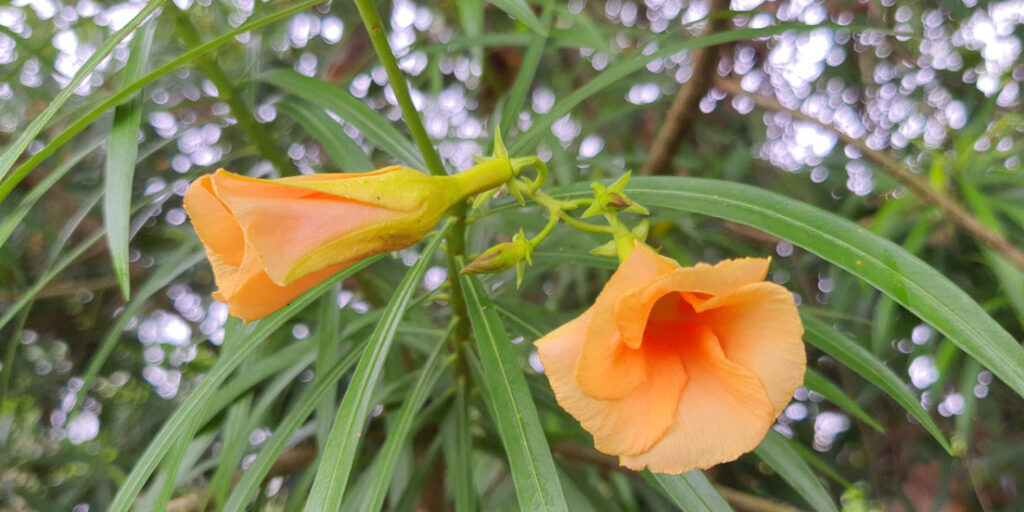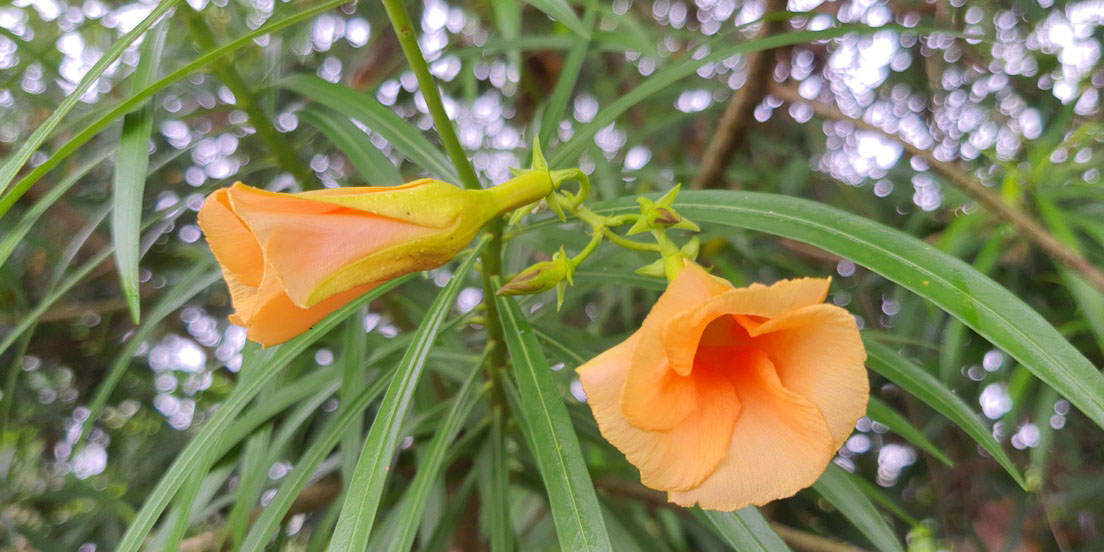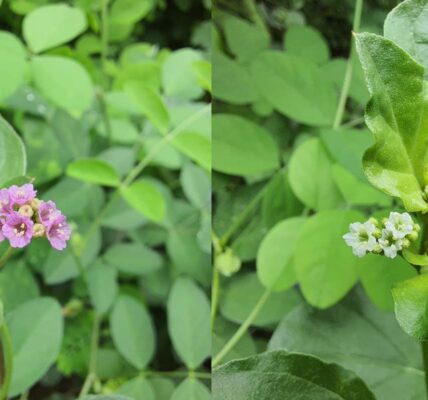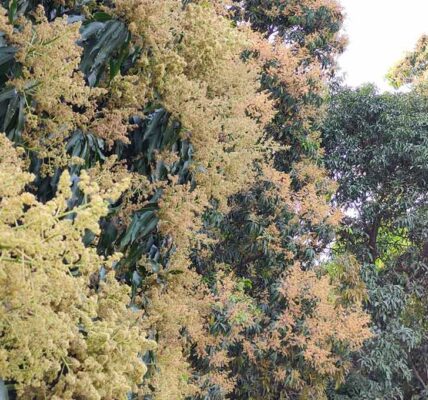The Enigmatic Kaner Flower: A Tale of Poison and Healing
The Kaner flower, also known as the Karvira in traditional Indian medicine system Ayurveda, is celebrated not only for its exquisite beauty and purity but also for its remarkable medicinal qualities. Its popularity has been on the rise in recent times, making it imperative to delve into both its advantages and drawbacks. Interestingly, the Kaner plant contains toxicity in every part, posing a severe threat to all living beings, including humans. What’s particularly noteworthy is that these toxins are cutaneous (dermally absorbed), making skin contact a concern. In the realm of traditional Ayurvedic medicine, Kaner has always existed as a paradox. It serves as a sub-toxin, simultaneously raising concerns due to its poisonous nature and offering a potential antidote when expertly employed. This article aims to unravel the intricate dual nature of Karvira by shedding light on its toxicological characteristics, medicinal implications, and therapeutic applications within Ayurveda.

Religious Importance of Kaner:
Kaner is an exotic and mystical plant filled with positive energy. The Kaner plant occupies a significant role in Hindu and Sanatan rituals. It is revered as the dwelling place of Lord Vishnu, and its blossoms hold a special place in the heart of Lord Shiva. According to Shiv Puran offering Kaner flower to lord Shiva is auspicious. Some people believe that the Kaner plant is an abode of Goddess Lakshmi, the God of wealth and prosperity. Beyond its religious importance, Kaner also plays a crucial role in astrology and tantric sciences. According to the Ravana Samhita authored by Ravana, Kaner, or Karveera, is utilized for practices such as the ‘Attraction Mantra’ and ‘Vashikaran Tantra’ (hypnosis).
Taxonomy and English Name of Kaner:
Oleander, scientifically known as Nerium oleander, belongs to the Apocynaceae family, with the genus Nerium and the species Nerium oleander. Yellow oleander, scientifically named Thevetia peruviana, shares a similar taxonomical classification with oleander, also falling under the Apocynaceae family. The genus name is Thevetia, and the species is Thevetia peruviana. The word ‘oleander’ is believed to have origins in both Latin and Arabic. In Latin, ‘olea’ means ‘olive tree,’ possibly alluding to its attractive appearance, while it may also be linked to the Arabic word ‘al-‘awandar,’ referring to the Nerium plant.
Common names of Kaner:
In common language, oleander is known by various names worldwide, including ‘Adelfa’ in Spanish, ‘Lauro rosa’ in Italian, ‘Rosa laurel’ in Portuguese, ‘Lorbeerrose’ in German, ‘Kaner’ in Hindi, and ‘Sazanka’ in Japanese. Common names for yellow oleander include ‘Yellow Oleander’ and ‘Lucky Nut’ in English, ‘Cascabela’ and ‘Chaparro Prieto’ in Spanish, ‘Cabello de Ángel’ in Spanish, ‘Kauvaka’ in Sanskrit, and ‘Pela Pela’ in Hawaiian. In Ayurveda, white-flowered Kaner is called Karveera (करवीर), Shatkumbha (शतकुम्भ), Ashvamaraka (अश्वमारक), and red-flowered Kaner is referred to as Chandat (चंडात) and Lagud (लगुड). In the Tamil language and within the Siddha Medicine System, Oleander is known as “Alari (அலரி अलरि),” while Yellow Oleander is recognized as “PanchaiAlari (பஞ்சையலாரி पञ्चैअलरि).”

Oleander in Ayurveda – poisonous paradox and healing miracle
The primary sources of traditional Ayurvedic knowledge concerning medicinal plants, specifically the ancient Samhitas and Nighantus, only mention two varieties of Karvira: white and red, which have been identified as Nerium indicum from a botanical perspective. However, “Raj Nighantu,” authored by Shri Narhari Pandit of Kashmir in the fourteenth to fifteenth century, expands this classification to include a total of four types of Karaveera: white, red, yellow, and black. Botanically, the yellow variety is recognized as Thevetia peruviana, while the black variety remains unidentified. It’s noteworthy that Ayurveda has long acknowledged the toxicity of Karvira, and Ayurvedic texts detail synthetic processes for its purification. In traditional Ayurveda, the leaves and roots of the Kaner are used as medicines with the utmost caution, necessitating thorough purification before any medicinal application.
Medicinal Properties of Alari aka Kaner
In terms of the benefits and side effects of Kaner, Ayurveda predominantly prescribes its external use, with minimal internal usage. White and red varieties are more commonly employed in classical Ayurvedic medicine. According to Bhavaprakash Nighantu, Kaner (white and red) possess Ushnavirya properties, and their juices are astringent, bitter, and possess the ability to combat conditions like leprosy, ulcers, itching, and worms. According to the Ayurvedic text “Raschandanshu” (Ras Ratna Sangraha), the purification process for Kaner involves boiling small pieces of Kaner root in cow’s milk and subsequently drying them with an oscillating device.
Poisoning and the side effects of Kaner aka Alari
Karvira, an herbaceous shrub, contains perilous compounds, notably oleandrin and nerin, present throughout the plant’s various parts. These substances can lead to adverse effects on the human body, primarily impacting the cardiovascular and gastrointestinal systems. Karvera poisoning symptoms can be severe, encompassing nausea, vomiting, diarrhea, and even the potential for a fatal heart attack. Given the potentially life-threatening nature of Karavira poisoning, immediate medical attention is imperative. In Ayurveda, experts employ antidotes and supportive care to treat those affected. Ayurveda offers a holistic approach to caring for poisoned individuals, with a focus on managing symptoms and facilitating recovery.

Conclusion:
Karvira aka Cascabela thevetia (yellow oleander) with its dual identity as both poison and medicine, serves as a captivating exemplar of the intricacies inherent in traditional healing practices. By acknowledging its hazards and understanding its healing potential when employed with expertise, we establish a foundation for a well-rounded approach to Yellow Oleander and analogous plants within the realm of Ayurveda. Collaborative efforts between traditional Ayurveda and modern medicine become imperative to ensure the responsible and efficient utilization of this enigmatic plant, thereby establishing safe and effective practices.
While is used in some traditional or folk medicine practices for various purposes, it is essential to emphasize its extreme toxicity. Ingesting any part of the plant, including the flowers, leaves, seeds, or bark, can be lethal and should be strictly avoided. It is not recommended for self-medication due to its potential for serious health risks. Cascabela thevetia, commonly known as yellow oleander or yellow flowered Kaner, is indeed a highly poisonous plant. It belongs to the genus Cascabela and is related to Nerium oleander, which is commonly known as oleander and belongs to the genus Nerium. Both of these plants are toxic.





